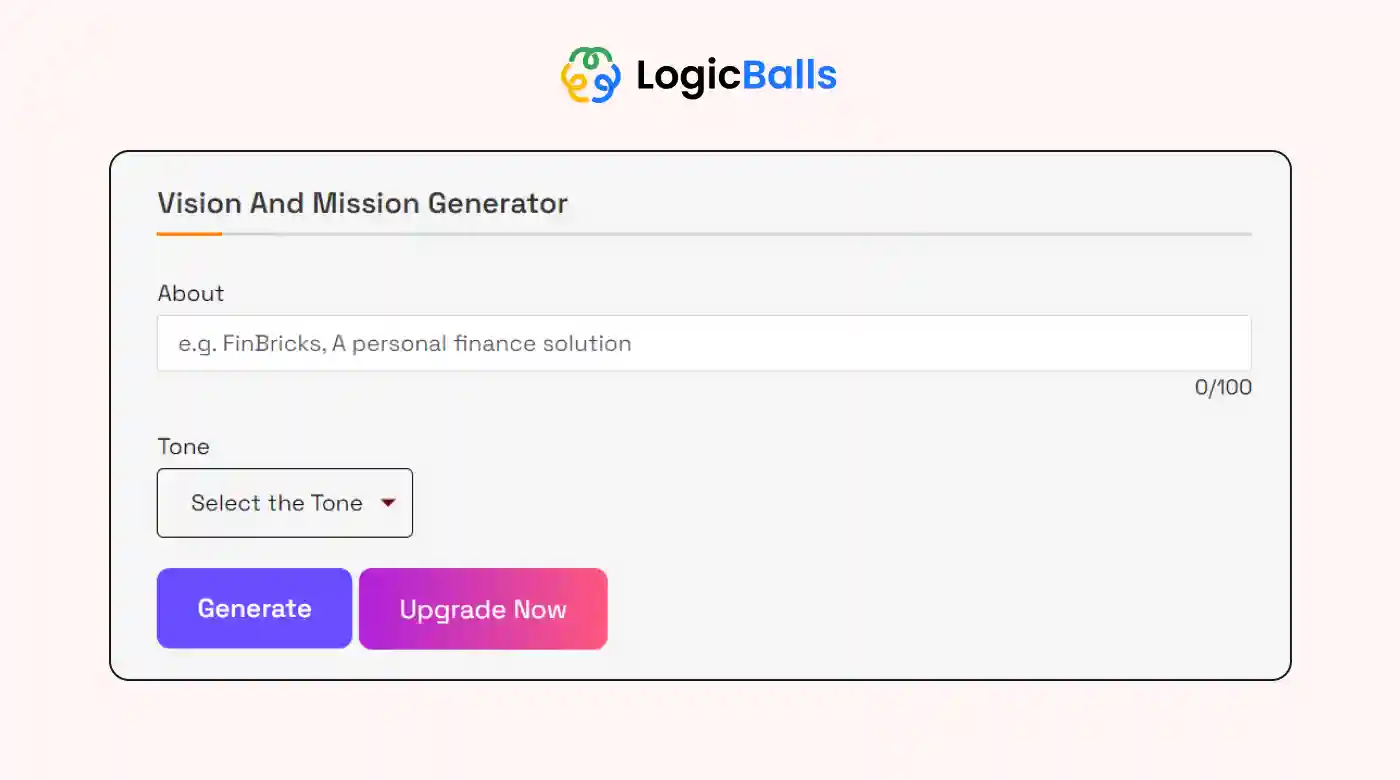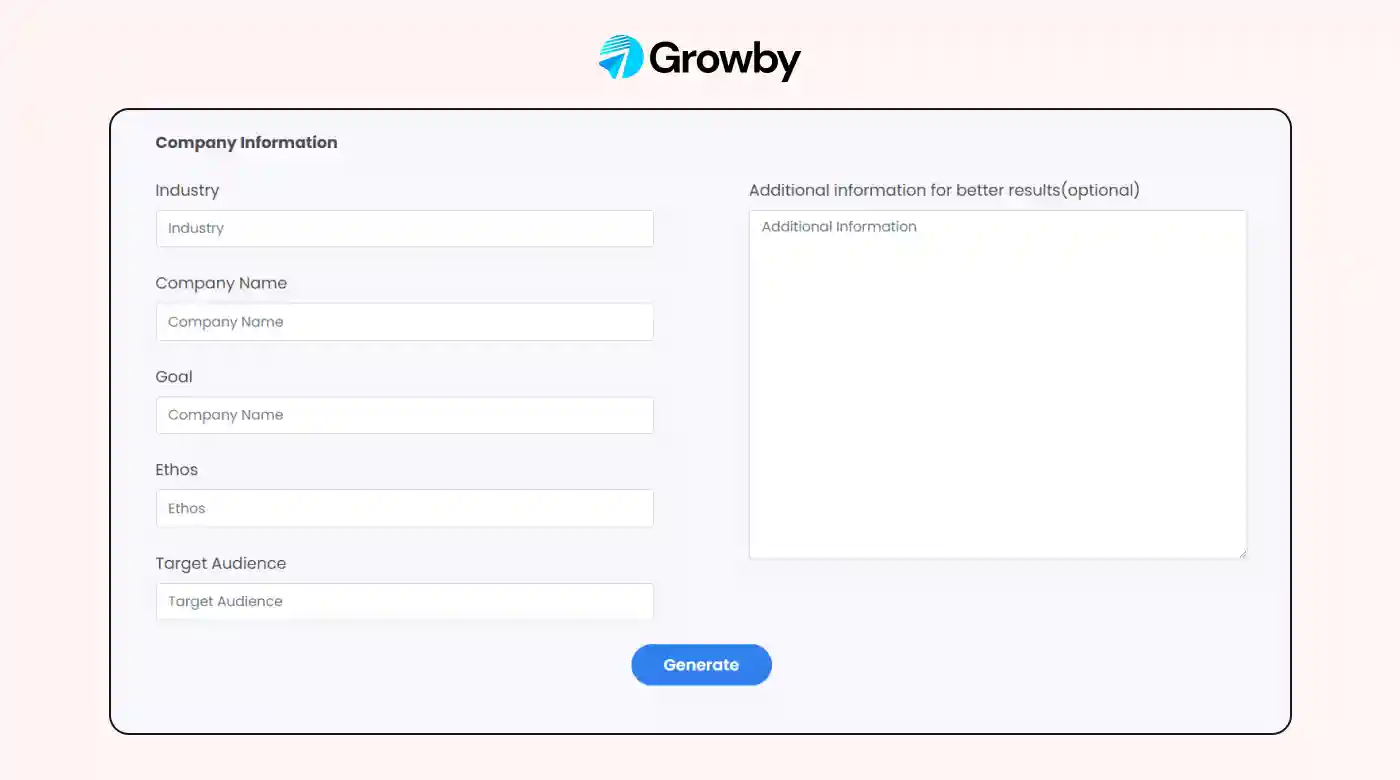Creating a compelling vision statement is an important task for any organization. However, it takes introspection and strategic foresight to capture a future vision in a few impactful words.
That’s where a vision statement generator comes in handy. These innovative, AI-driven tools are designed to make creating vision statements easy. They can provide you with an inspiring vision framework in moments.
In this article, we look at how these tools work, their strengths and weaknesses, and how to use them. We’ll also review five different vision statement generators and explore how you can use AI yourself to craft a vision statement from scratch.
What is a vision statement generator?
A vision statement generator is a digital tool that uses AI and machine learning algorithms to help businesses craft the perfect vision statement. It does so by analyzing a company's goals and core values, industry trends, and a range of other data points.
Before getting into what a vision statement generator does, let’s first discuss vision statements.
A vision statement is a descriptive but concise statement of an individual’s or organization’s vision for the future. It builds on a brand’s mission statement and acts as a motivational force to work toward a future reality — often pictured to be 5 to 10 years down the road.
Its ability to inspire people to pursue a shared vision means a corporate vision statement has the potential to increase employee productivity and engagement.
Organizations used to spend considerable time creating their vision statements. But with the help of artificial intelligence (AI), modern ones can use online tools to speed up the process.
By blending organizational inputs with advanced AI algorithms, a vision statement generator can provide a foundation that significantly streamlines the vision creation process.
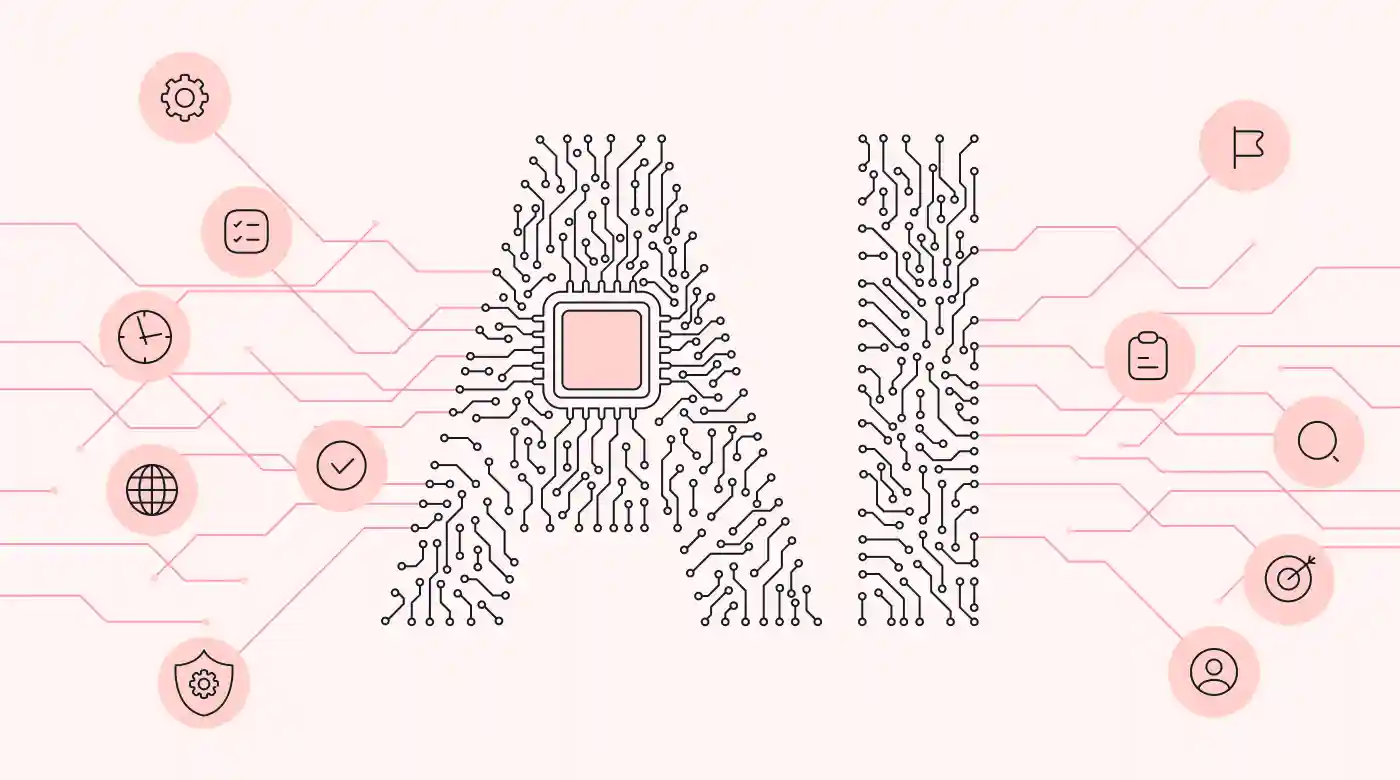 |
Example of an AI-generated vision statement
Let’s put these claims to the test.
We asked Feedough, an AI-powered vision generator, to create a perfect vision statement for a staple American retail chain: Walmart.
We input the following into Feedough’s generator:
- Company name: Walmart
- Industry: Retail
- Target audience: American shoppers
- Long-term goal: Building a better world, saving people money, and growing by 10% in 5 years.
- Adjectives: Passionate, sustainable
The software came up with five variations of vision statements, including the following:
- “As a passionate retail leader, Walmart aims to create a brighter future by delivering exceptional value and savings to American shoppers, driving sustainable growth, and making a positive impact on the world.”
- “With a passionate dedication to American shoppers, Walmart is on a mission to build a sustainable world, save people money, and grow by 10% in 5 years, creating a future of abundant opportunities.”
Walmart doesn’t list a vision statement on its corporate website, but compare the AI-generated statements above to Walmart’s purpose statement:
“We aim to build a better world — helping people live better and renew the planet while building thriving, resilient communities. For us, this means working to create opportunity, build a more sustainable future, advance diversity, equity and inclusion and bring communities closer together. And at the end of the day, helping our customers save more of their hard earned money for the things they care about most. Because at Walmart, Live Better is what we do every day.”
It’s clear that if Walmart were to start a vision statement from scratch, Feedough’s #1 statement above could be a good starting point for a statement that mirrors Walmart’s purpose.
Strengths and weaknesses of vision statement generators
Vision statement generators have a mix of both great and not-so-great features. Here’s a look at some of both:
Strengths
Vision statement generators are great at providing quick results, usually generating statements within minutes. They also typically use standard business language, so the output usually sounds professional and coherent.
In some cases, these tools can even produce inspirational text that shows glimmers of creativity. Think of the phrases like “brighter future” and “creating a future of abundant opportunities” that popped up in Feedough’s Walmart statements above.
Weaknesses
However, these tools have their limitations, as well.
First of all, the quality of the output relies heavily on the input provided. Since the input fields in these tools are limited, inadequate or inaccurate information can quickly lead to irrelevant statements or visions that just don’t hit the mark.
Another common critique is the tendency of these tools to use a cookie-cutter approach. This can result in generic statements that don’t fully capture the company’s unique goals or vision.
Lastly, while the language used by vision generators is generally professional, it often lacks the inspiring quality that’s essential for a compelling vision statement.
Given these limitations, a helpful approach is to not think of the generator’s output as a final product but as a useful starting point that you can then customize to reflect your company’s unique values and vision for the future.
How to use a vision statement generator
Typically, vision statement generators and mission statement generators use a template that asks for specific information so the software can tailor the statement to the organization.
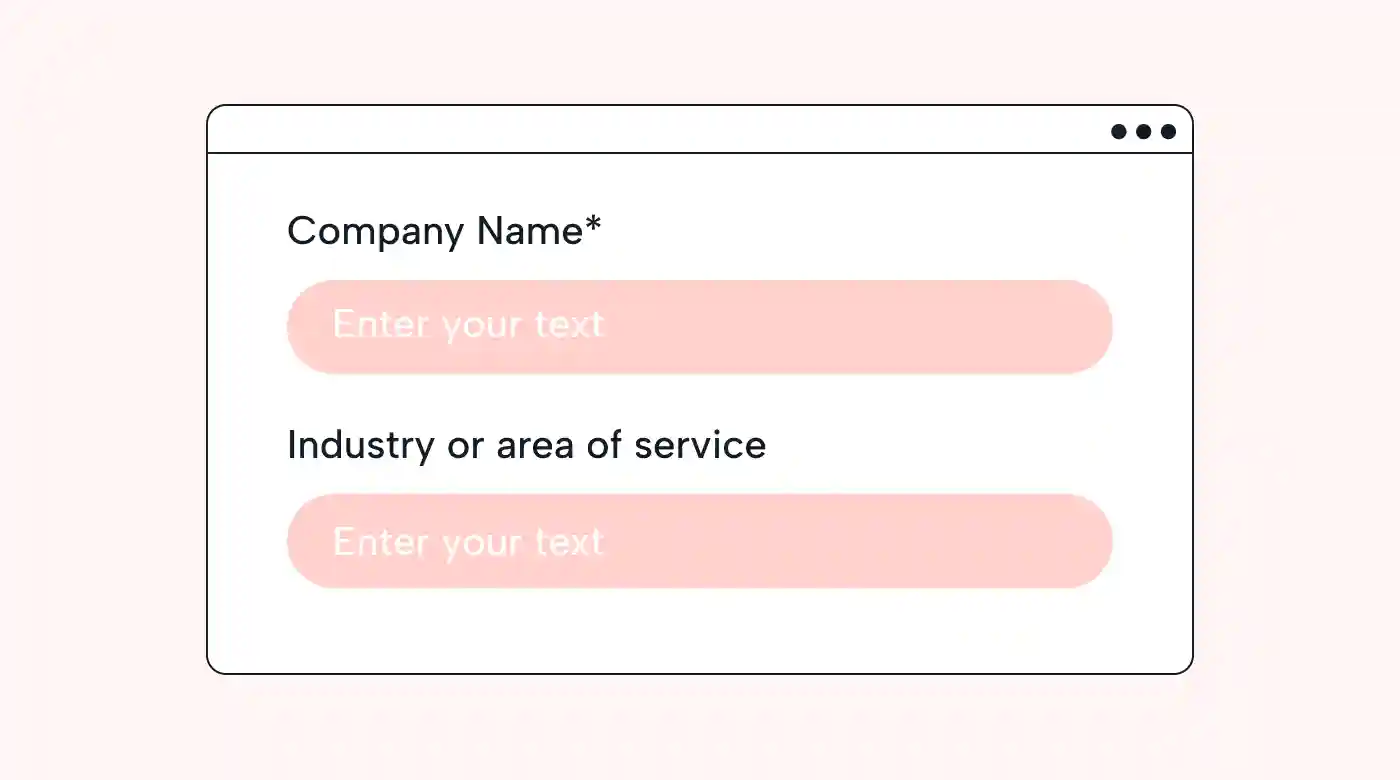 |
These input fields differ with each tool, but be prepared to enter details on your organization’s values and long-term goals. For the latter, think of expansion plans, desired market position, impact goals, and other big-picture concepts.
The tool may also ask you to indicate your market or target audience and describe in a few words what sets your organization apart from the competition.
It’s good to think these points through before starting with the tool.
When you’re ready to begin, just go through the items in the tool’s template. Be concise but clear in your responses.
Once the generator provides a draft vision statement, review it critically. Determine whether it truly expresses your company’s essence and future aspirations. In most cases, it will need some tweaking to make your statement unique and inspirational.
Review: 5 free vision statement generators
Below, we’ll review five different online vision statement generators.
We’ll use “PowerPack,” an imaginary company, to create sample statements with each tool.
Let’s say PowerPack is a packaging manufacturer striving to become one of the top five packaging companies in the US through its innovation, affordable products, and exceptional customer service.
1. Feedough
Feedough’s vision statement generator is an efficient tool if you want to draft a vision statement quickly and easily. It’s also user-friendly, with a straightforward, business-oriented questionnaire.
This tool also generates multiple vision statements for one query, so you can choose the one you like best.
On the downside, Feedough-generated statements can be a bit generic. They tend to lack unique business nuances, as shown in this vision statement for PowerPack:
“PowerPack’s ultimate goal is to rise among the nation’s top 5 packaging companies, accomplishing this through delivering exceptional products and services that cater specifically to the needs of online and brick-and-mortar stores’ shipping departments.”
So, for best results, input detailed, specific answers into the questionnaire.
2. LogicBalls
LogicBalls offers a simple mission and vision statement generator, creating both types of statements with one query.
Its free version has one 100-character “About” input field, plus you can set the tone of the statement by choosing one of 14 styles, such as casual, formal, and humorous.
The basic input description “PowerPack is a packaging manufacturer. Our goal is to be in the top 5 in the nation” generated the following vision statement:
“To revolutionize the packaging industry with innovative solutions that empower our clients to exceed their potential, while becoming the unrivaled leader in packaging manufacturing, setting new standards of excellence and inspiring others to follow suit.”
This statement shows that LogicBalls takes a certain creative license when generating statements for their clients. Here, for instance, it added “empower our clients to exceed their potential” and “becoming the unrivaled leader.”
But other phrases, such as “setting new standards of excellence,” are generic. So, to get the most out of this tool, be very clear and specific in the “About” field.
3. StudyCorgi
This tool has a unique approach to vision statements; it simply strings together the text in the input fields to create a basic statement.
As a result, the output can be clunky, as in this example:
“Our vision at PowerPack is to Become one of the top 5 packaging manufacturers in the US. by Providing innovative products and excellent customer service. Affordably.”
Clearly, StudyCorgi’s outputs are just a start and will require serious tweaks to be turned into an inspiring vision statement.
4. Growby
Like LogicBalls, Growby generates both a mission statement and a vision statement for the same query.
A nice feature is that, in addition to the standard input fields (company name, target market, etc.), it includes a large text box for any extra information you might want to add.
Despite these basic inputs, Growby generated a detailed vision statement for PowerPack:
“At PowerPack, our vision is to lead the packaging industry by setting new standards for innovation, quality, and affordability. By leveraging our unique value proposition and competitive advantages, we aspire to become the preferred partner for shipping departments across the nation. We envision a future where our sustainable packaging solutions not only minimize environmental impact but also maximize efficiency, ensuring seamless and secure delivery of products. Through our dedication to excellence and strong partnerships, we aim to create a lasting impact in the industry, empowering businesses to thrive in a rapidly evolving market.”
This statement has potential but is laced with generic phrases that could apply to any company, such as “By leveraging our unique value proposition and competitive advantages” and “ensuring seamless and secure delivery of products.”
To get the most out of this tool, be as specific as possible.
5. IvyPanda
IvyPanda’s vision generator operates similarly to StudyCorgi’s by stringing the input text together. For PowerPack, this yielded the following result:
“Our vision at PowerPack is to Become one of the top 5 packaging manufacturers in the US. by Innovative but affordable products and excellent customer service affordably.”
As with StudyCorgi, the results are less than optimal and will need significant changes to be transformed into a unique, inspiring vision statement.
Since none of the tools reviewed generated perfect vision statements, let’s explore an alternative: generating a solid vision statement yourself using AI tools.
Using AI to create a vision statement from scratch
We asked three readily available AI programs to create a vision for an imaginary clothing store, “MiniMax,” which hopes to establish additional stores in every neighborhood of the city in which it’s located.
Here are the results:
ChatGPT 4
“At MiniMax, our vision is to become a cornerstone of fashion and style in our community. Within the next decade, we aspire to expand our presence to five strategically located stores across the city, ensuring that customers of all ages have convenient access to our diverse range of clothing, shoes, and accessories. We aim to create a unique shopping experience that caters to every individual’s style, making us the go-to destination for fashion in every corner of our town.”
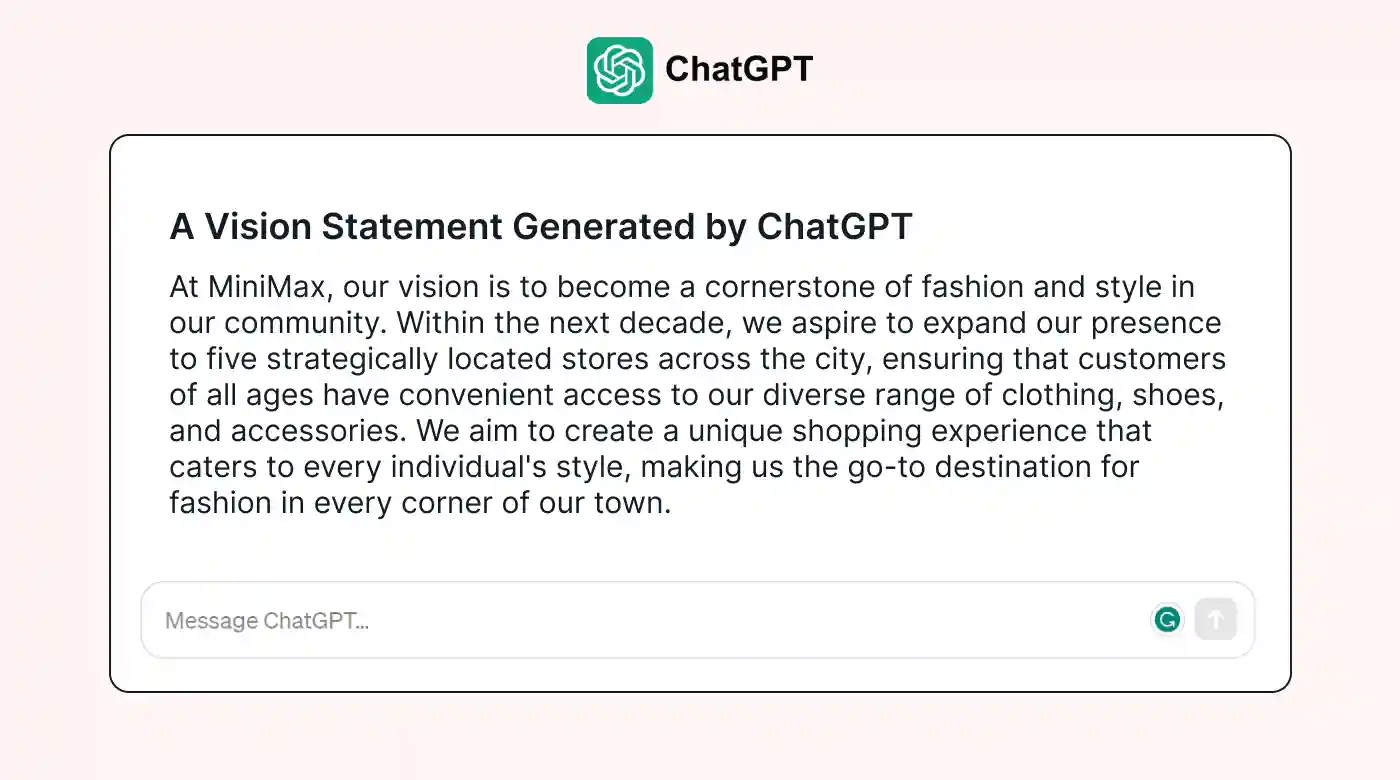 |
Bing (Microsoft)
“At MiniMax, we believe that fashion is not just about looking good, but also feeling good. Our goal is to provide high-quality clothing and accessories that are both stylish and comfortable. We aim to establish a store in every main neighborhood of the city we are located in, so that everyone can experience the joy of fashion. We strive to be a brand that inspires confidence, creativity, and self-expression.”
Bard (Google)
“MiniMax: Where every corner bursts with style. We dream of a city where fashion isn’t confined, but woven into the fabric of every neighborhood. One store at a time, we’ll bridge the gap between everyday life and runway dreams, making confidence and expression accessible to all. Imagine: your style, reflected in every street, every corner, every vibrant beat of our city’s heart. That’s MiniMax.”
As you can see, the outputs vary, but they’re more detailed than what most vision statement generators produce.
Without style prompts, ChatGPT creates a somewhat generic, business-like statement yet paints an attractive, achievable picture of the company’s future.
Bing produces a similar result but uses slightly more emotionally charged terminology (e.g., “feeling good,” “joy”).
And Bard? Well, true to its name, it paints a lively, poetic vision that is certain to inspire some higher-ups at MiniMax.
Which one is best? That’s up to you. But each of these self-generated AI statements would be easy to customize and transform into a unique, inspiring vision statement you can be proud of.
Power your vision with Motion’s intelligent planning software
Vision statement generators are useful tools for quickly drawing up an individual or company vision statement, though the results will likely need tweaking to truly make the phrasing your own.
Once you have a vision statement you’re happy with, use a tool like Motion’s AI-driven Project Manager to lock in your plans and make your vision a reality.

A certified content writer and SEO strategist, Carla Groenewegen writes about success principles and practices aimed at SMBs and not-for-profit organizations.

